Trying to unpixelate an image that’s blurry, fuzzy, or otherwise low quality doesn’t have to be a headache. By using depixelating AI, you can regenerate the lost data in a poor quality image in seconds.
The real trick is finding the right AI for the job, especially when there are so many tools to pick from. In this article, we’ll cover 4 different options for fixing a pixelated image and provide clear steps for using each of them.
Regardless of if you’re an Adobe Photoshop user, Photopea user, or even someone with no photo editing experience working on your phone, this guide will help.
What Does Unpixelating an Image Mean?
Unpixelating an image means fixing a blurry, pixelated, or low quality image by turning it into one with sharp, clean edges and details. Usually, unpixelating is done using an AI to artificially enhance the image
The reason why we need AI to successfully unpixelate an image is because detail has been fundamentally lost from the image where it is pixelated. There is no way for a non-AI tool to restore the detail that has been lost or never existed in the first place. The only option is to use generative AI to recreate the detail.
Going a little deeper, a pixelated image has minimal detail in the areas where it is pixelated. This is connected to concepts like resolution and pixel density. Pixel density is a measurement of how many pixels– or unique squares of visual information– are in a space.
Since each pixel can hold visual information in the form of a small, colored square, more pixel density means more visual information is available in one space. And with more visual information, you can assume that there will usually be more detail in that area.
Pixel density is not the only factor in how good an image looks. Although it’s another way to measure pixel detail, resolution is distinct from pixel density. Resolution is simply a measure of the total number of pixels in an image. It has no regard for how many pixels are crammed into how large of a space, like pixel density.
For a photo to look high quality, it must have sufficient resolution and pixel density. An image with a small resolution but a high pixel density will look great– that is, until you blow it up to a larger size.
Most AI that work for unpixelating an image will completely scale up the resolution of a photo, thereby creating more pixels from nothing. With this method, the result will always be higher quality and less fuzzy.
How To Unpixelate an Image Online for Free
Step 1: Open Imagewith.AI Overscale Tool
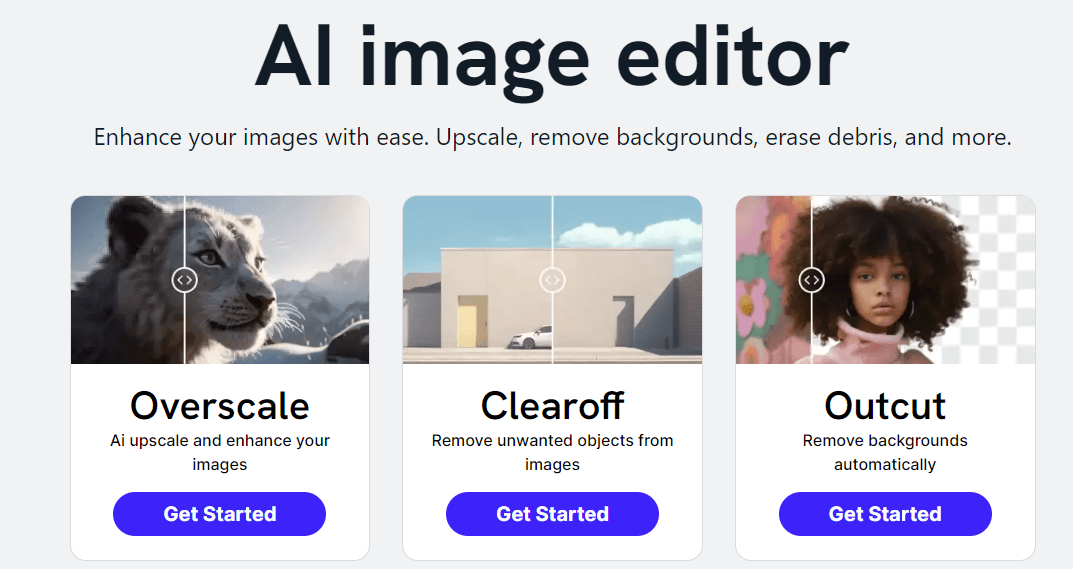
Start by going to Imagewith.AI’s Overscale Tool, which will allow you to upload a photo to unpixelate.
Overscale drastically increases the resolution of an image using AI. That means you can get an unpixelated photo in seconds, even if the original photo was low quality.
We recommend using Imagewith.AI because it’s completely online and free, with no account needed and no annoying watermarks. You can finish the entire process from start to finish without paying anything.
Step 2: Upload Image

As a free user of Imagewith.AI, you will only be able to scale up to a resolution of 2560 x 2560px and you can only process 10 images every day. This is a great resolution for most digital images, including social media posts, profile banners, YouTube thumbnails, desktop wallpapers, and even blog images.
If you want to use Overscale’s maximum resolution limit of 16,000 x 16,000px, or process more than 10 photos, you can purchase a subscription or buy credits directly.
Step 3: Select Image Resolution
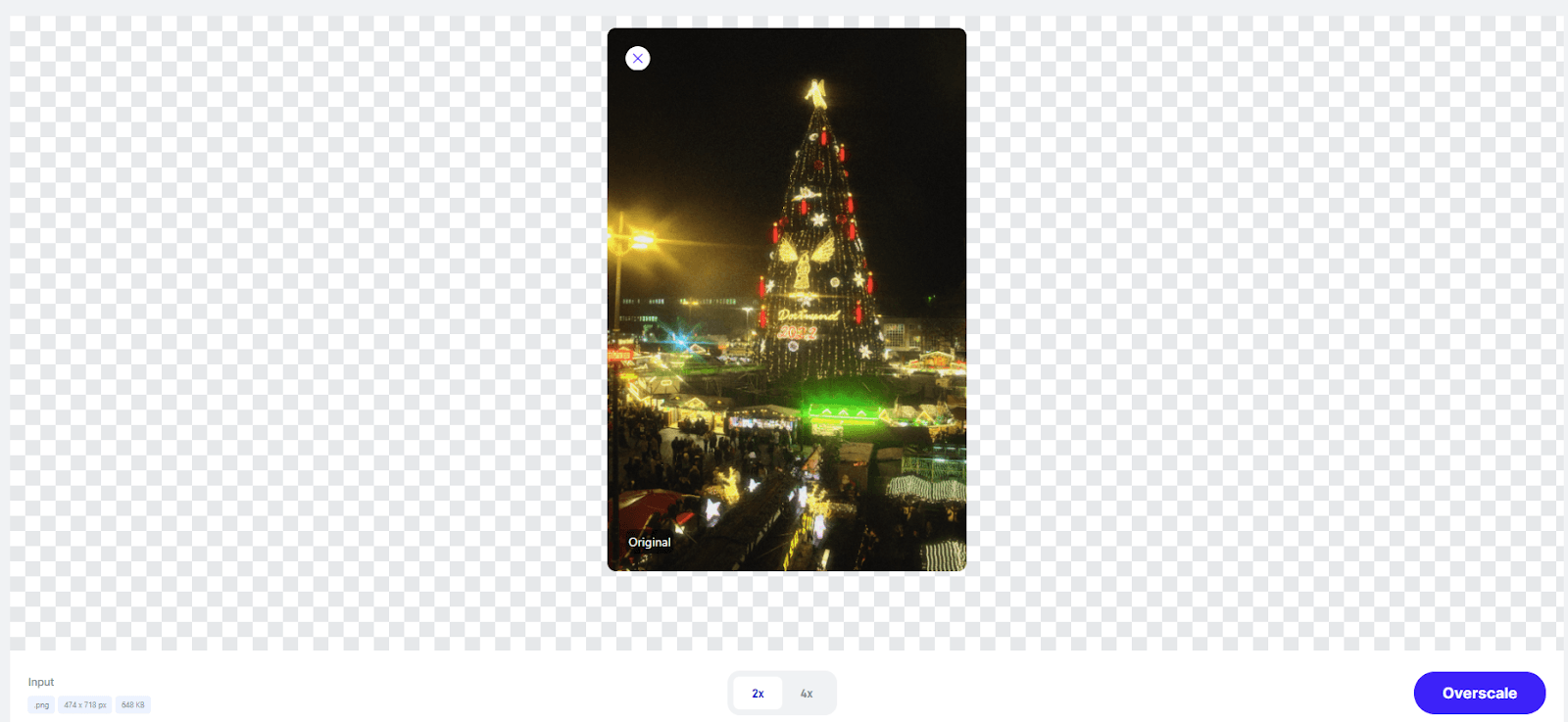
In the center of the bottom toolbar, you will see x2 or x4 listed as options for the final unpixelated image. This means the Overscale tool will multiply the original resolution by either 2 or 4.
Pick the multiplier based on what your desired final image resolution is. You should also consider the resolution limitation if you are using the tool for free.
Pro Tip: If you don’t already know the resolution of your image, you can check the current resolution, file size, and file type in the bottom left corner.
Step 4: Generate and Download
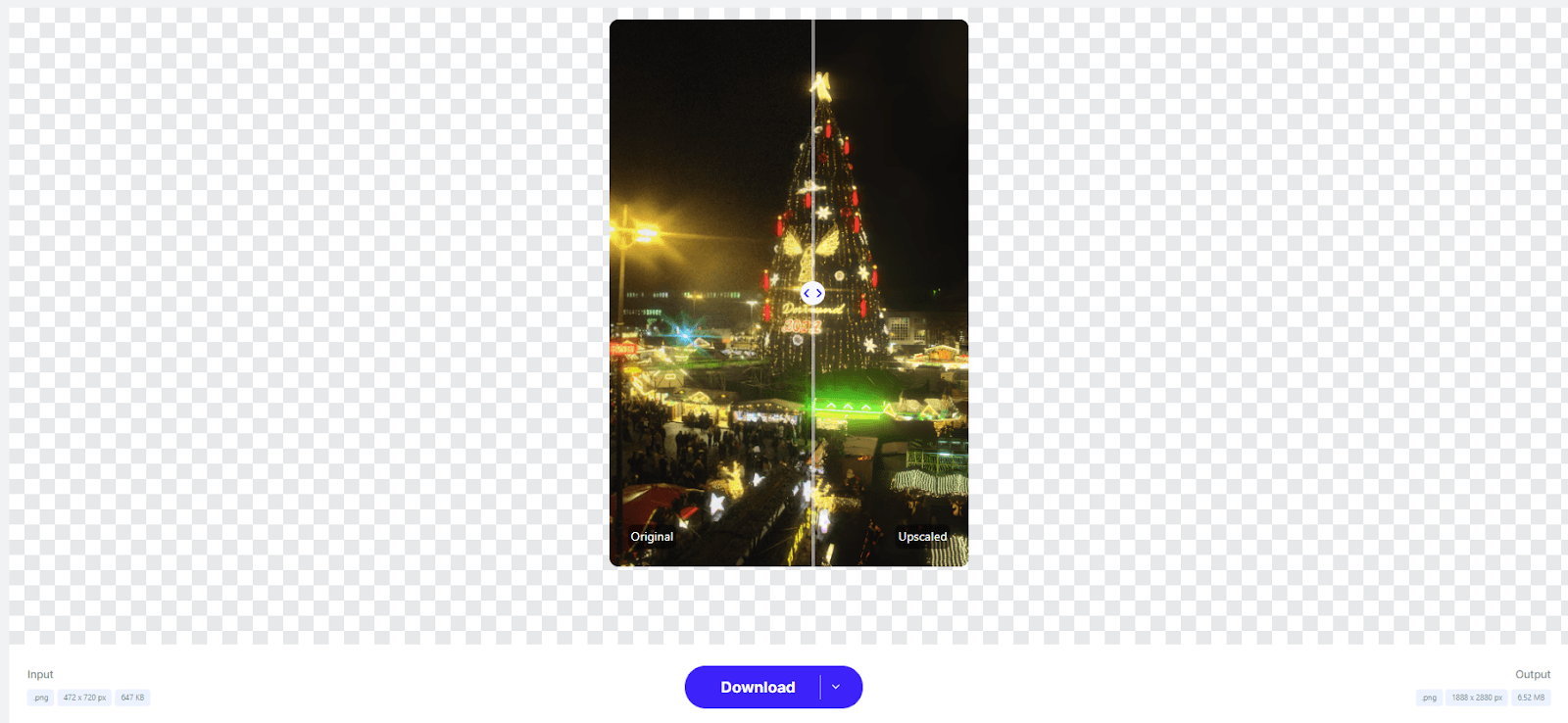
Once you’ve selected the multiplier, press Overscale. It will take a few moments for the AI to process the image, especially if you chose a high multiplier or your image was already large.
Drag the slider over the image to see the pixelation difference. You can see the final output resolution and size in the bottom right corner.
If you’re happy with the final unpixelated image, select a file type and press download.
How To Unpixelate an Image With Phone App
Step 1: Install Remini App
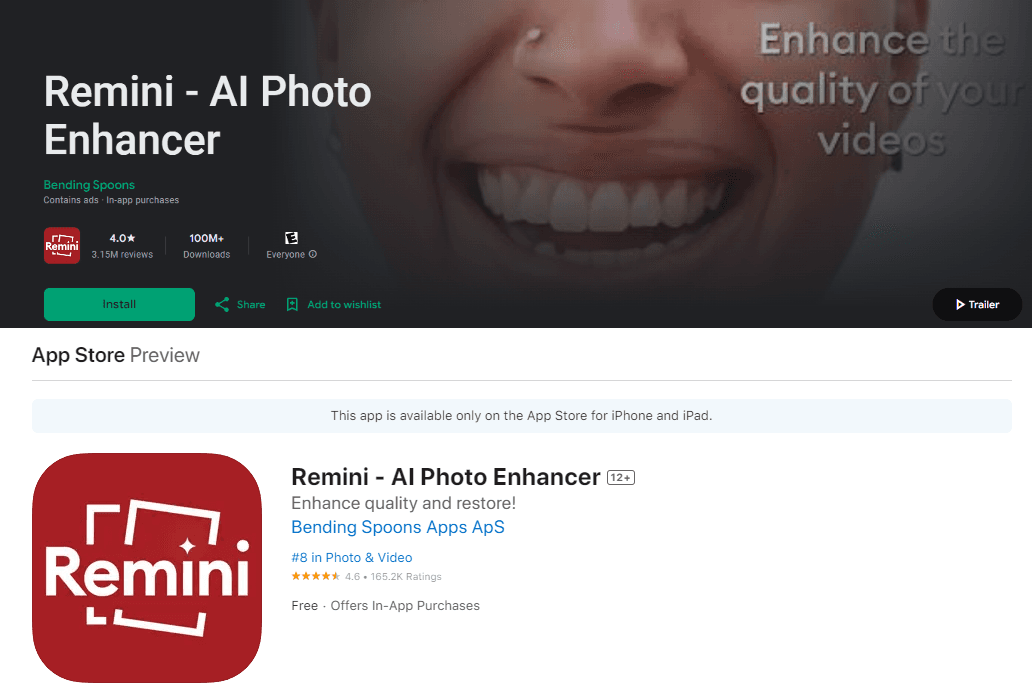
To unpixelate an image on iPhone, Android, or any other mobile device, we suggest installing the Remini app. It offers a free version/trial, and it has a fast unpixelate tool called Enhance. You can install it either through the Apple App Store or the Google Play Store.
The Enhance tool uses AI to polish the image and clean up blurry, pixelated edges. Although you can use it for free, you’re limited in how many times you can use it. You’ll also need to watch some ads.
Still, the Remini app is the best way you have to unpixelate an image on a mobile device without needing to pay money. If you’re willing to spend money, it becomes an even better option. The Lite plan costs $5 per week and the Pro plan costs $10 per week.
Step 2: Upload Image and Go to Enhance Tool
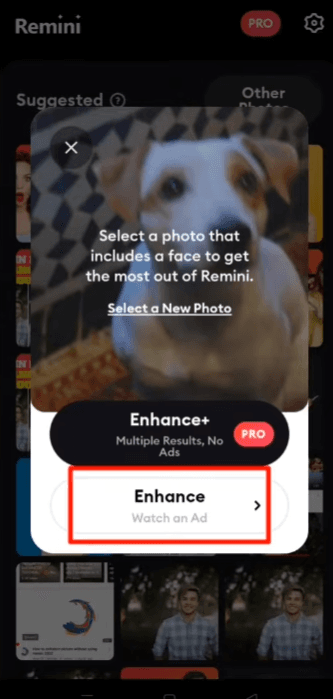
Once you open the Remini app, you will need to upload an image and go to the Enhance tool. Look through the different listed options for tools until you see Enhance and tap on it.
If you want, you can use another Remini tool after Enhancing the image. However, we suggest using Enhance first so you have a high-quality image to do further editing on.
To upload an image, make sure you have allowed Remini to access your photo library. You can either press Allow when prompted with the pop-up on an Apple device, or go through the settings on either an Apple or Android device.
Remini might tell you that the Enhance tool works best on a photo with a human face in it, but it actually will work just fine with a wide range of photos. You can use Remini to depixelate landscapes, still-life photos, or even pictures of your furry best friends.
If you are using the free version of Remini, you will need to watch a short ad before you can use the Enhance tool. Alternatively, you can skip past the ad with a paid version.
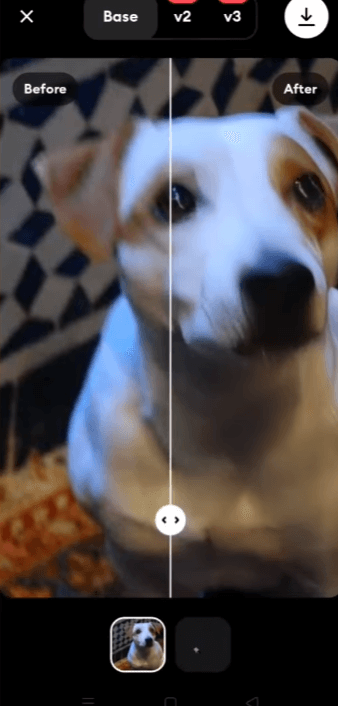
Step 3: Process Image
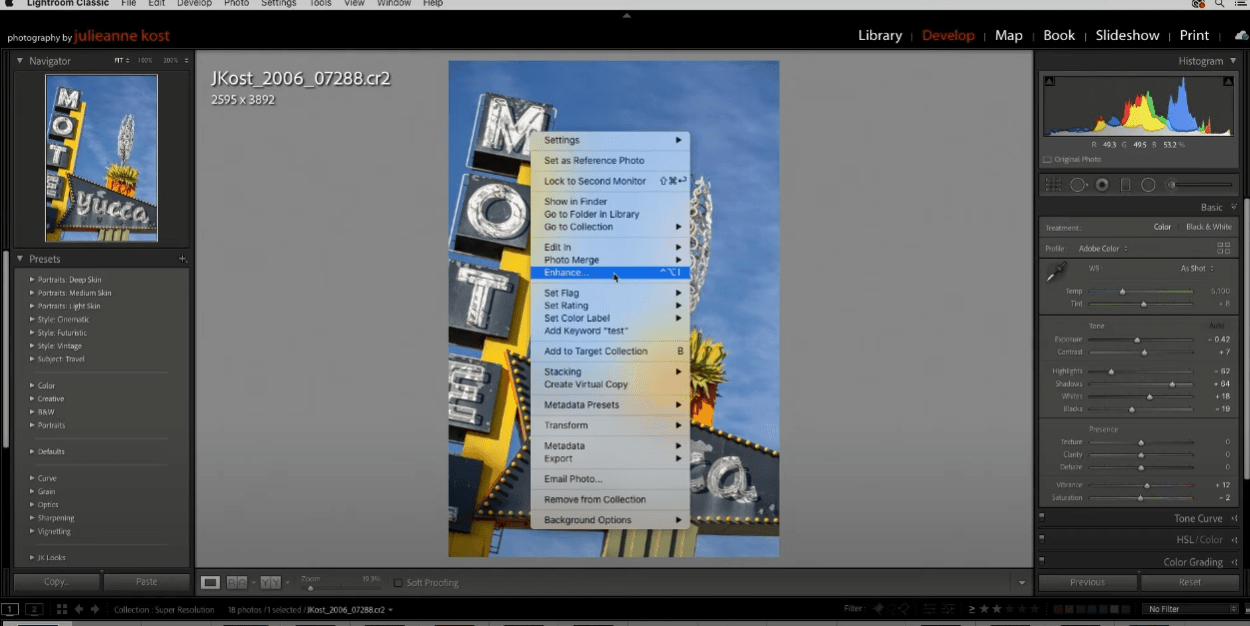
After you’ve watched the ad and moved on to the Enhance tool, you can select which AI model you want to use to scale the video. It will get depixelated no matter which option you select: Base, v2, or v3.
As a free user, you will only have access to Base so that’s what we will use in this guide. There will be a brief processing after you select Base.
Step 4: Check and Download
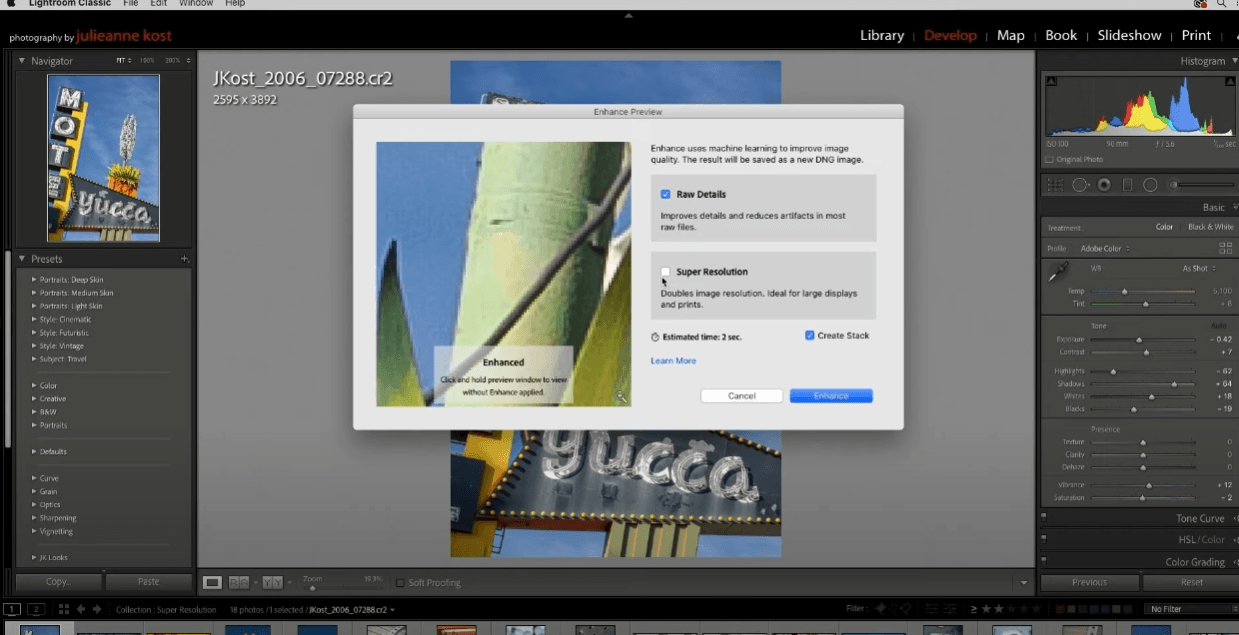
You can drag the slider left and right to see how much your image has been depixelated. If you’re satisfied with the Base AI result, then you can download it right away.
Press the icon in the top right to download it directly to your phone. From there, you can always upload the image onto social media or move it over to a PC device.
Before downloading, you might want to look at the most important details in the image to make sure the AI hasn’t messed them up. For example, detail or pattern spots might look blurred or slightly warped.
How To Unpixelate an Image With Photoshop Lightroom
If you have a subscription to Adobe Photoshop or Adobe Lightroom, then you can seamlessly unpixelate an image right alongside the rest of your edits. Adobe has added an AI tool called Super Resolution, which is a high-powered way to increase the resolution and detail of an image.
Step 1: Open Image in Photoshop Lightroom
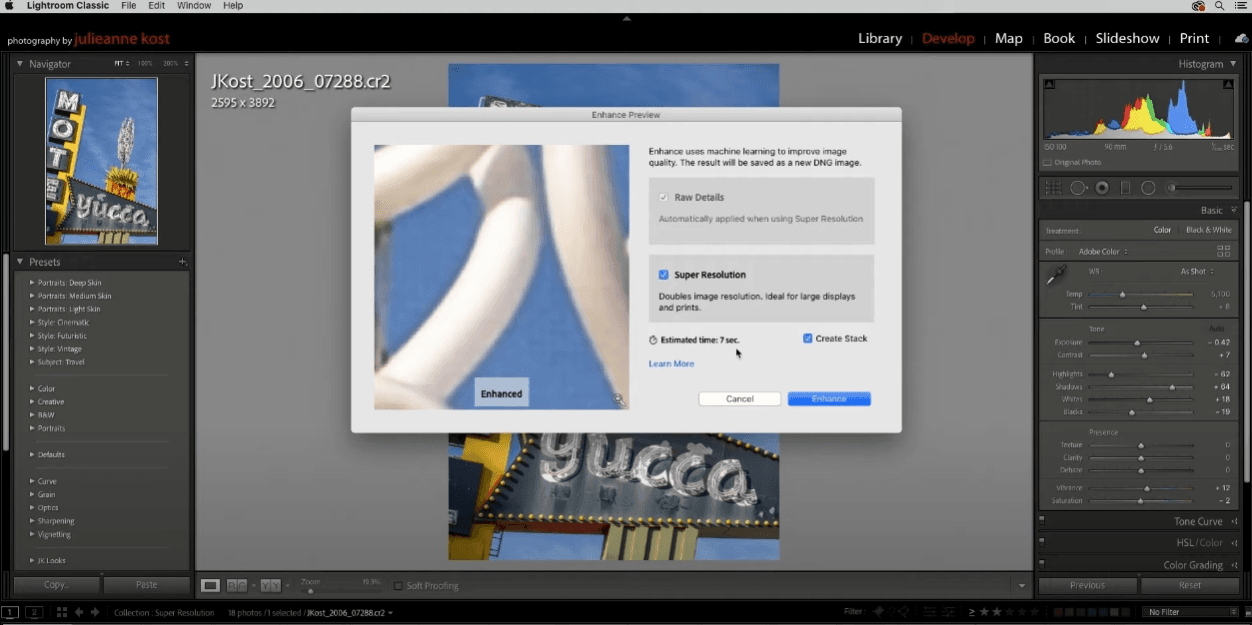
Start by opening the image you want to edit in Adobe Photoshop Lightroom. You can complete the same process in Adobe Photoshop, but we suggest using Lightroom since it’s a photo editor’s “first stop”.
Adobe Photoshop has almost all of Lightroom’s tools, combined with hundreds more editing tools. It’s a more comprehensive and complicated software, which is unnecessary for this simple job.
Ideally, your image file should be RAW, TIFF, or JPEG.
Step 2: Go to Enhance Tool
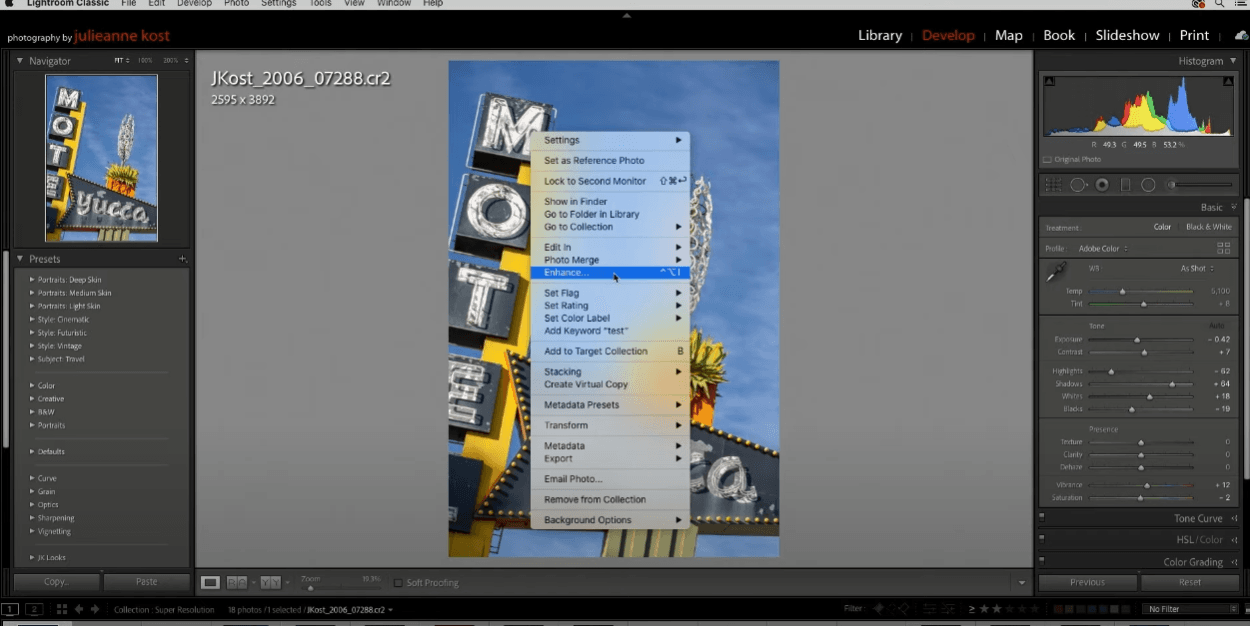
Make sure you have the correct layer highlighted.
Step 3: Select Super Resolution
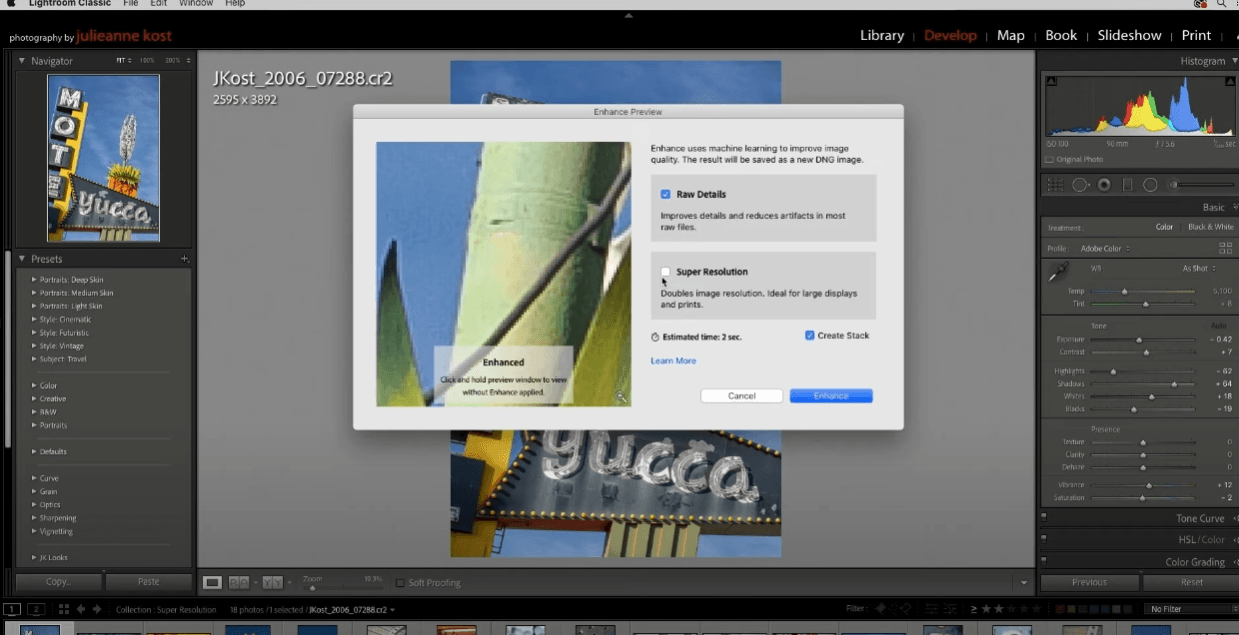
Once you’ve opened the Enhance dialog box, look for the Super Resolution option. You can tick the Super Resolution option without changing any other settings, so go ahead and do that.
Super Resolution is the depixelate or resolution enhancement tool that Adobe owns. You can see the resolution improve in the preview window.
In order to examine whether or not Super Resolution has edited your photo correctly, you can toggle the display. Click and hold or click and drag to preview the Super Resolution Enhance.
If you’re happy with the result, you can move on to the next step.
Step 4: Press Enhance and Save
Press Enhance to tell the Super Resolution AI to start processing. You can see the Estimated Time it will take for the AI to finish the enhancement and depixelating process in the Enhance dialog box.

Save your image and move on to your next edits or download it directly as desired.
How To Unpixelate an Image With Photopea
Although you can unpixelate an image with photopea, there are some major limitations.
Photopea doesn’t have any generative AI for enhancing an image, which means it cannot recreate detail that is completely lost. In the case of intentionally pixelated license plates, faces, and other censored photos, it’s usually impossible to unpixelate using Photopea.
Photopea has an Unsharp Mask, which is what we will be using to unpixelate fuzzy, low quality images. Again, since Photopea has no way to recreate lost visual data, you will only be able to repair the pixelated edges and details if they are still clear enough.
Step 1: Open Image in Photopea
Start by creating a New Project and importing the image into Photopea. Press File > New Image, drag and drop, or copy paste the image to get it into Photopea.
Remember, the higher quality your image is to start, the better Photopea will work for unpixelating those fuzzy edges.
Step 2: Open Unsharp Mask Dialog Box
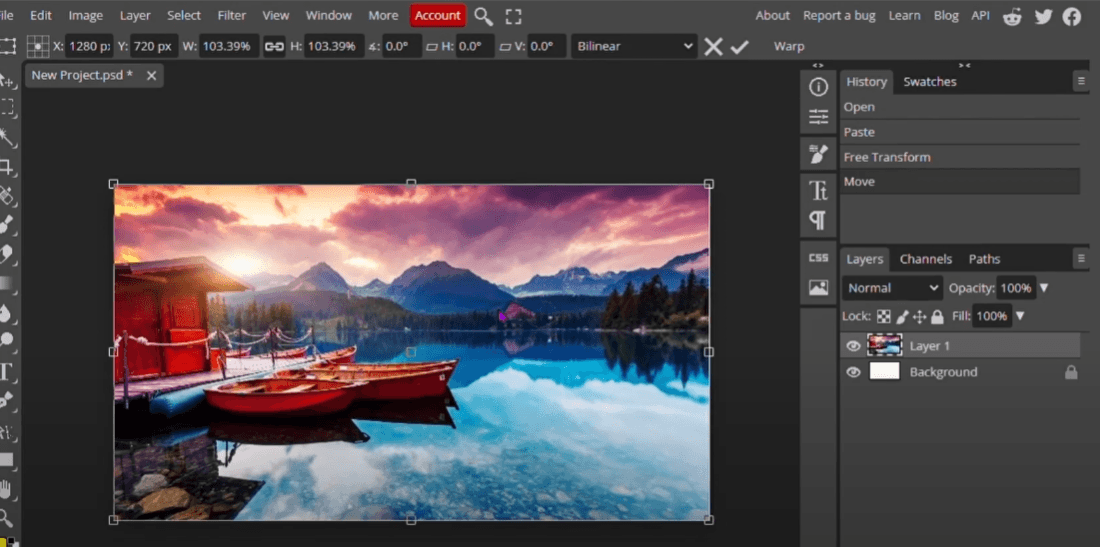
Step 3: Apply Unsharp Mask
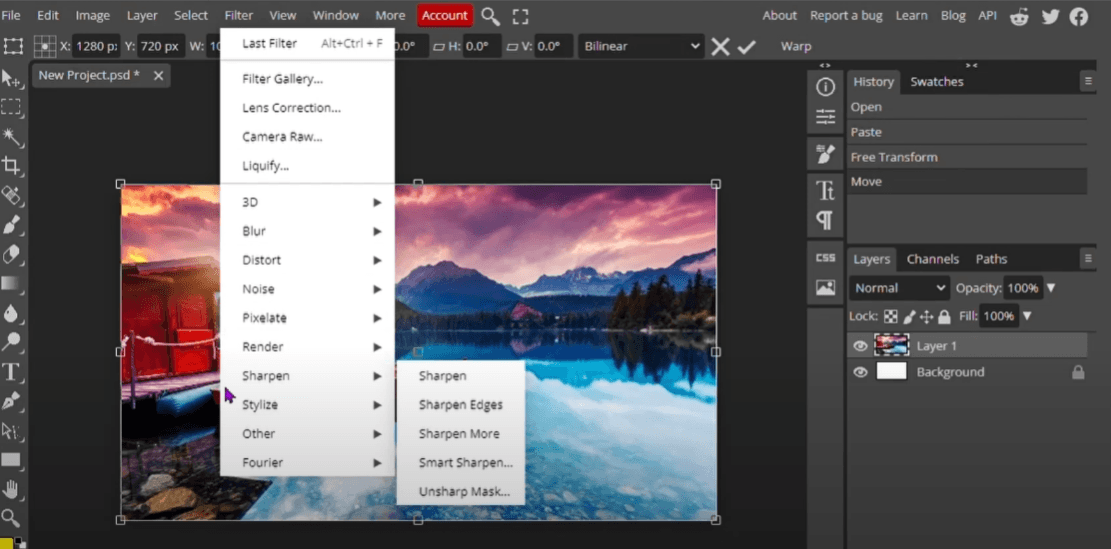
The way Unsharp Mask will unpixelate your image is by sharpening the detail lines. Slowly use the Amount slider to apply the correct level of sharpening to the photo.
You can also alter Radius, which is helpful for defining where the detail lines are. Radius only needs to be tweaked slightly and in some situations, so avoid changing it too drastically.
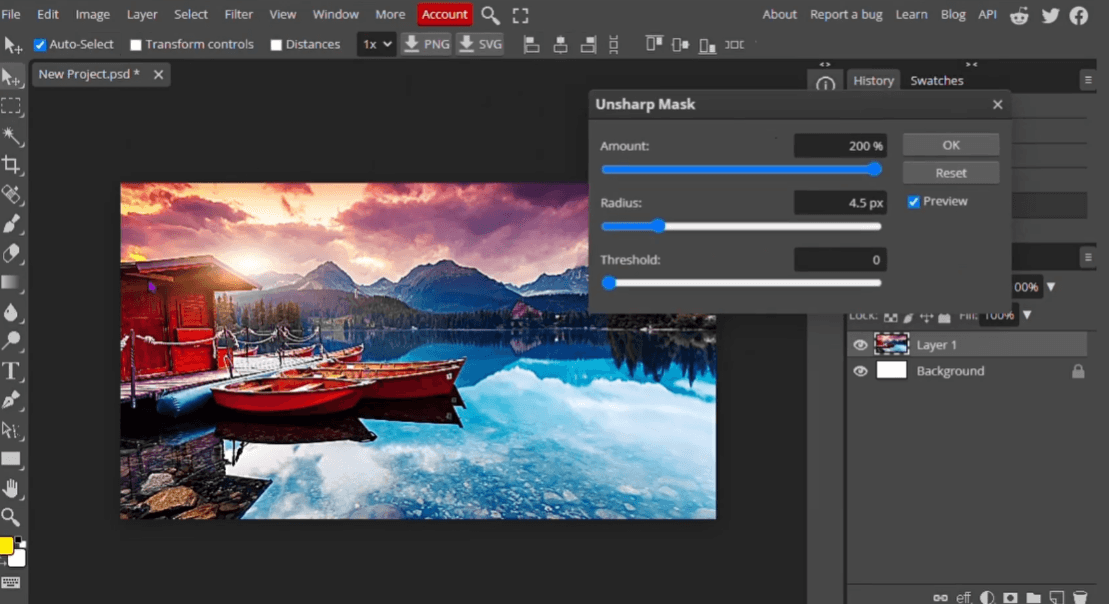
Pro Tip: For a natural look in your final image, use a light hand when altering the Amount slider. Compare back and forth between the original and your sharpened version to double check that you aren’t taking things too far.
Step 4: Review and Save
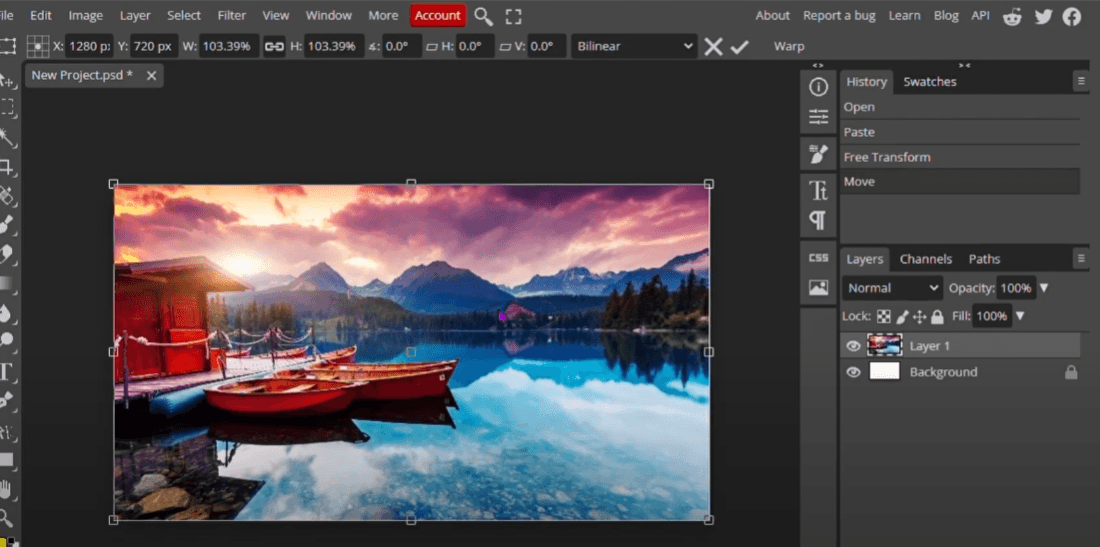
Conclusion
Whether you’re trying to edit a photo for an awesome social media post sent to your best friends or a polished and professional graphic design, Imagewith.AI has tools that can help.
You don’t need to sign up for an auto-renew trial, install software, or deal with watermarks. Just open up these online tools and get started:
- Imagewith.AI's Outcut Tool to cleanly remove the background of an image
- Imagewith.AI's Clearoff Tool to remove unwanted objects in an image
- Imagewith.AI's Overscale Tool to bump up the resolution of a low-res image






